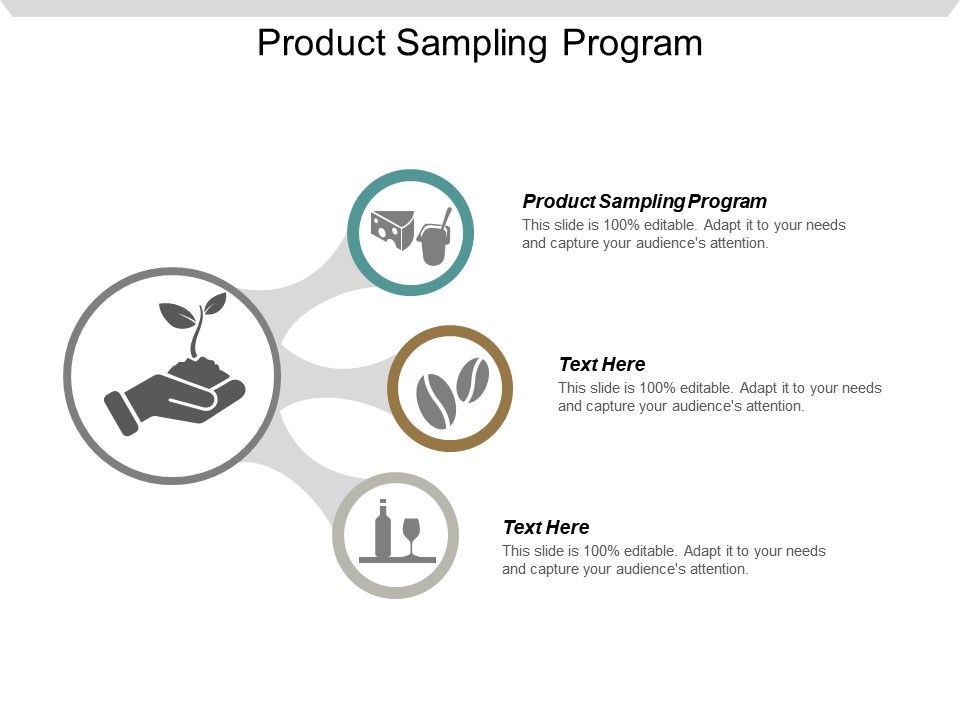
A sample is a method that uses a statistical analysis of a given number of observations from a large population. Sampling agency with a product sample method analysis verify the quality and rating of the product. The purpose of a free trial is to familiarise consumers with a new product similar to the concept of a test drive, where customers can try the product before buying it.
The samples are systematically collected, similar to the samples taken during the batch process, to ensure that each sample is representative of the rest of the batch. To demonstrate the acceptance of the material, each sample dosing unit is tested inline using criteria similar to those of the batch processing process and registered with details of the approved process.
The sampling plan can be applied to the collection of finished products to monitor and determine compliance with regulatory considerations. It can also be used for the collection of raw materials, identifiable batches, processing units and finished products from factories so that regulatory action is possible.
These types of samples include random samples, block samples, judgment samples, and systematic samples. Dry sampling or wet sampling is a method to invite customers to test a product. It is aimed at mass markets and supermarket events.
The methodology used to sample a large population depends on the type of analysis carried out and may include simple or systematic samples. In cases where account and transaction information is too large, it may be necessary to carry out an audit without a sample of the population.
To facilitate the development of a sampling plan, it is convenient to divide an infinite population into several finite populations so that each product produced by a shift worker can be sampled and produced in a day. The choice of a specific product sampling company plan depends on the purpose of the analysis, the characteristics that measure the type of total population of each sample, and the type of analysis techniques used to characterize samples. It is not possible to apply adequate statistical analysis to this type of sample because the selected subsample may not represent a good representation of the population.
Sample agencies for certain product types and populations are developed and documented by various organizations authorized by the Official Methods Association of Official Analytical Chemists (AOAC) for certain product types and populations. Sampling plans will also be applied to imported food intended for human consumption.
The classification of foodstuffs for sampling purposes is divided into 3 categories as described in the regulatory sample and listed in these categories according to industry product codes and sequence nomenclature. Physical sampling is collected from the end product or near-end product (uncoated tablets) to reflect the entirety of the process, including atypical behaviors that may affect quality.
On the other hand, a crucial disadvantage of physical samples is their low sampling frequency, as they can overlook short-term changes in the process. For serious progress in sample quality, a representative sample is effective in detecting deficiencies, but it does not tell you whether errors have occurred throughout the process, nor can it identify them.
Another well-known and popular method of direct sampling is wet sampling, in which you offer the consumer a product directly in the store. Similar to your indirect sampling, you offer the buyer a product that he can test at home. For example, you demonstrate the product in the store, explain what you are doing with it, and then offer the customer a sample to take away.
The third advantage of sampling is that you have the opportunity to create a market and create demand for products that buyers have not seen or experienced. According to one study, 24% of respondents said they had bought a sample of a product or item they wanted to buy before entering the store.
A strong sampling campaign for consumer goods can create an immersive customer experience in the new digital age through insightful sampling on online platforms. However, product sampling as a marketing method can fall in a way where there is little consumer insight or feedback through direct interaction with business users or follow-up testing.
